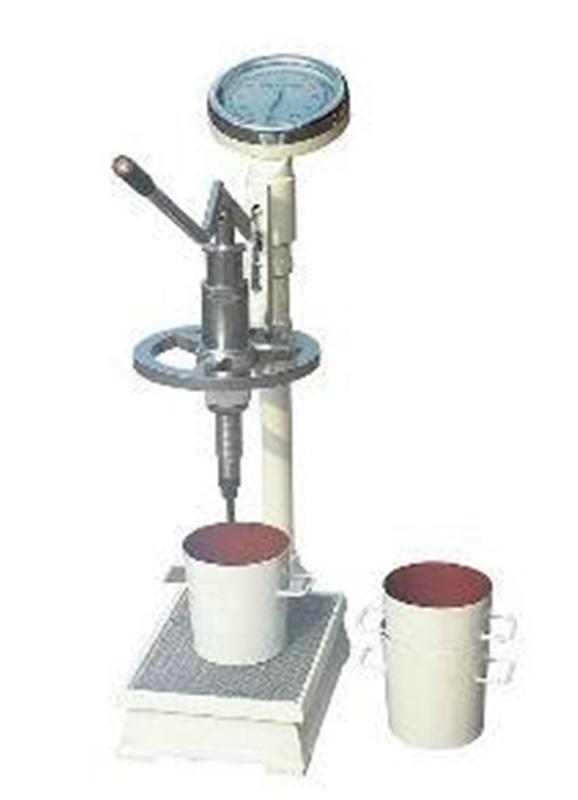Product Name: HG-1000 Concrete Penetration Resistance Meter 1. Application of HG-1000 Concrete Penetration Resistance Meter The HG-1000 concrete penetration resistance meter is used to determine the setting time of concrete by measuring its penetration resistance. 2. Operational Use of HG-1000 Concrete Penetration Resistance Meter Place the concrete penetration resistance gauge on a flat surface. Fill the sample container with the concrete mixture and place it on the instrument base. Loosen the adjustment screw and select the appropriate penetration needle. Rotate the adjustment screw until the pointer aligns with the zero mark on the scale. Set toggle switch 1 to "Adjust" and toggle switch 2 to "Forward". Press the work button, and after 2 seconds, the sample container will begin to rise. Adjust the position of the needle so that it just touches the surface of the concrete, then tighten the adjustment sleeve. Press the work button again, and the sample container will continue to rise. At this point, the pressure gauge will show increasing values. After 10 seconds, the sample container will have risen 25 mm, reaching the deepest penetration point. Record the reading on the pressure gauge. The container will stay for 4 seconds and then descend, returning to its original position after 7 seconds. The device will automatically shut down once the test is complete. For the second penetration test, rotate the handle to change the test location. When you hear a small click from the steel ball, the position has changed. Return the handle to its original position and repeat the process. The needle can be positioned in either the inner or outer ring. If the needle has already been used in one ring, rotate the handle 180 degrees to move it to the other ring. This process also involves a clicking sound to confirm the change. If the penetration point is on the outer ring, you only need to push the handle once. If it's on the inner ring, you need to push it twice. Always check that the pressure gauge pointer is at zero before starting a test. If not, adjust it. Toggle switch 2 can be set to "Reverse" if needed to lift the needle away from the sample during testing. The penetration needle comes in three sizes: 20 mm², 50 mm², and 100 mm². The 100 mm² needle is used for initial setting tests, while the 20 mm² needle is used for final setting tests. The pressure gauge has two scales: the inner scale measures oil pressure (0–1.6 MPa), and the outer scale indicates the force applied to the needle. The force is divided by the cross-sectional area of the needle to calculate penetration resistance. Two thick red lines on the outer scale represent key values: 350N corresponds to an initial penetration resistance of 3.5 MPa (using the 100 mm² needle), and 560N corresponds to a final penetration resistance of 28 MPa (using the 20 mm² needle). After long-term use, if the pressure gauge pointer cannot be adjusted to zero, it may be due to oil leakage in the sealed chamber. In this case, add oil through the refueling plug. Use standard oil, and consider using thinner oil in winter. To refill, unscrew the refueling plug, adjust the zero screw, fill the oil carefully without introducing air, and then reseal the plug. Squeeze out excess oil and tighten it securely. Annual inspection should be performed without removing the pressure gauge. It must be verified as a whole, and users can purchase inspection tools directly from the factory. Budget Dry Herb Vaporizers,Portable Convection Dry Herb Vapor,Top Affordable Dry Herb Vaporizers,Cheap Dry Herb Vaporiser END GAME LABS , https://www.eglvape.com